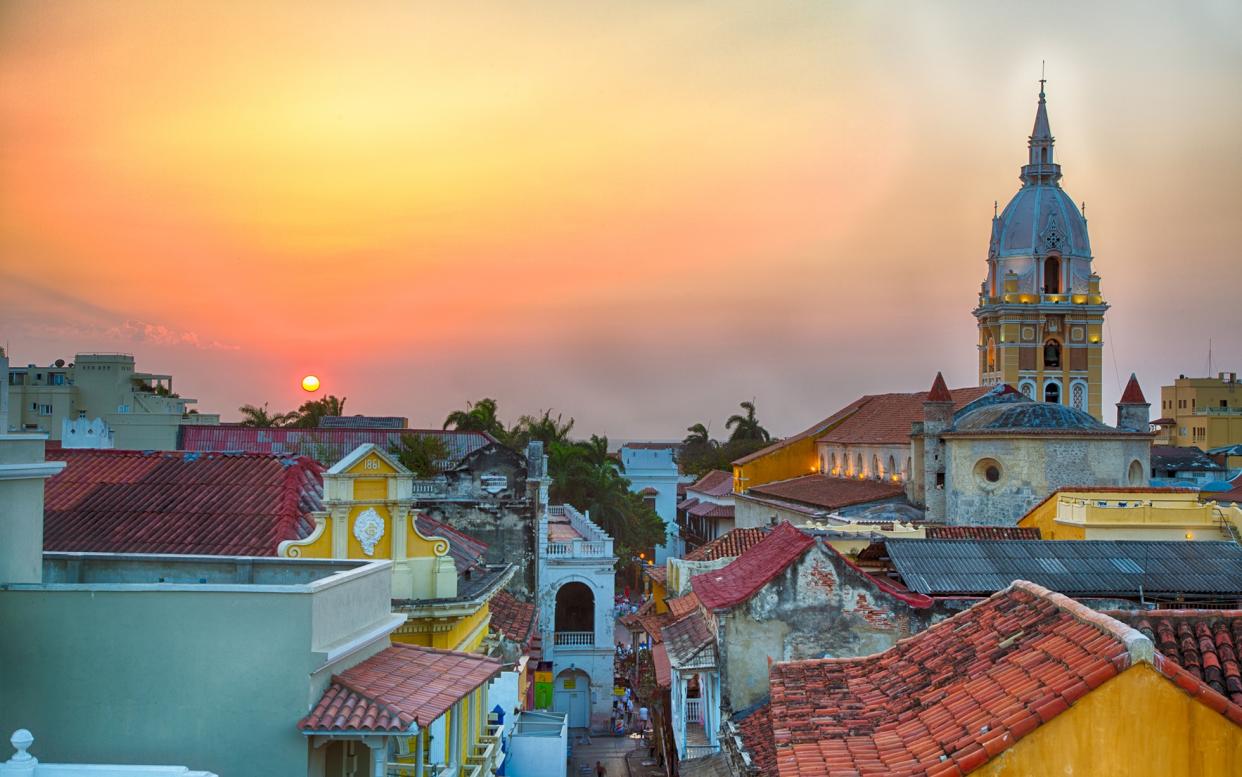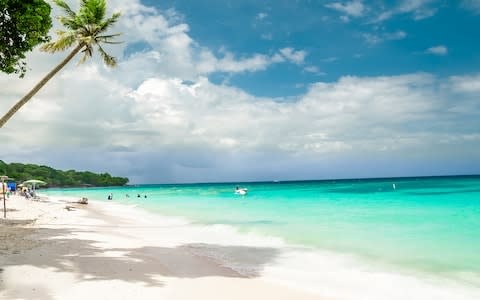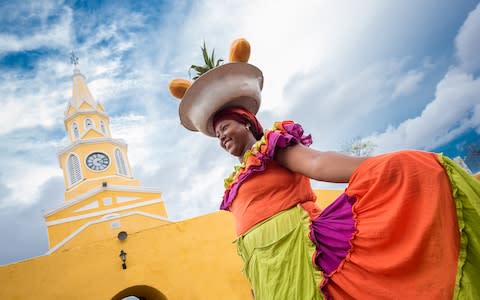Cartagena cool – an expert guide to Colombia’s most alluring city

Why go?
Cartagena, a World Heritage listed city on the Caribbean coast where Gabriel Garcia Marquez set the luscious, evocative ‘Love in the Time of Cholera’, is the jewel in Colombia’s already overcrowded crown.
Expect cobbled alleys, flower bedecked balconies (a prize is awarded every year for the most beautiful balcony), horse drawn carriages, statues (saluting the heroes who helped defend Cartargena against British and French colonialists, pirates and ultimately from Spain) and elegant plazas. Simply put: every single street looks like something out of a García Márquez novel.
Cruise port location
The port of Cartagena de Indias (as it is officially called) is located approximately 3.5km (2 miles) from the old city, in the Manga neighbourhood. Cruise ships dock at one of six piers; a complimentary shuttle service connects the pier with the cruise ship terminal.
Can I walk to any places of interest?
Cartagena port is something of a destination in its own right offering a beautiful aviary (home to a menagerie of exotic animals including flamingos, parrots, red howler monkeys and more), as well as a replica of an emerald mine, an attractive alfresco cafe and some decent (if overpriced) souvenir shops.
Beyond the port, there’s not much within walking distance per se. Your best bet is to take a taxi to La Boquilla, a well maintained beach that’s situated five miles north of Cartagena. Alternatively make for Manzanillo Beach, a 10 minute taxi ride from the port. The Old Walled Town of Cartagena is 15 minutes away by taxi and can also be visited on a ship sponsored excursion.

Getting around
Chances are you’ll probably spend most of your time in the picturesque Old Town where, owing to its small size, it’s perfectly possible to stroll around on foot.
Outside of the historic Old Town, the best way to get around is either by Uber or by yellow taxi. If you opt for the latter, be warned: taxi drivers are accustomed to tourists and will try to rip you off, so agree a fare before entering the vehicle.
What to see and do
Cartagena – or Cartagena de Indias – as it was originally, and romantically, called, will without a doubt be one of the most beautiful and seductive places that passengers will ever visit.
What can I do in four hours or less?
Spend an unmissable morning or afternoon wandering around the walled old town – enter through the historic Torre del Reloj – putting your bargaining skills to the test by purchasing sweets from Portal de los Dulces (featured in Gabriel Garcia Maquez’s 'Love in the time of Cholera'), before losing yourself in a labyrinth of sights, shops, sounds and smells.

The Walled City is also where you’ll find the Museo del Oro, home to a fantastic collection of gold and pottery of the Zenú, which can be admired for free. Then check out Castillo de San Felipe de Barajas – the strongest fortress ever built (1536-1657) by the Spaniards in any of their colonies and one of Cartagena’s most iconic landmarks – that was erected to protect the city from pirates. Don’t miss the dark underground tunnels.
What can I do in eight hours or less?
Follow the four hour itinerary and allocate a good few hours to stroll through Cartagena’s charismatic, colonial streets: every avenue reveals something of interest.
Determined to return home with a tan? Make for Playa Blanca – a pristine beach about 20 km south west of the city, on Isla de Baru. Here you can enjoy the classic combination of white sand, turquoise seas and the smell of coconuts on the breeze, while being served ridiculously cheap cocktails (it’s a fact that drinks taste better on a beach) by friendly vendors.

Alternatively if you’re after some sun and sand but don’t have enough time to head to Baru Island, visit La Boquilla north of Cartagena. It’s not the most aesthetically pleasing beach but, what it lacks in looks, it more than makes up for in character: this is where the Cartageneros come to soak up the sun.
When night falls, put on your dancing shoes. Every Cartagenero loves to salsa and you can join them – it’s what Shakira would want – on the dance floor in a spot such as Café Havana in Getsemani, Cartagena’s party centre. Concerned about keeping up with the Cartageneros? Steady the nerves with a few slugs of aguardiente – a local alcohol spirit flavoured with anise. After a couple of shots, you’ll soon find yourself shimmying and shaking with the best of them. Besides even if you have two left feet, Cartagena’s salsa establishments are worth visiting for the atmosphere and phenomenal people watching alone.
Another option is to ride a chiva, a colorful bus made entirely of wood, that basically serves as a nighttime bar on wheels: expect live music, lots of liquor… and to see residents at their wildest.
Eat and drink
The beautiful Caribbean port city of Cartagena is fast becoming known as Colombia’s culinary capital. Get stuck into fresh ceviche in the shoe box sized La Cevicheria (a Cartagena institution) or Arepas de huevo (fried corn cakes filled with egg) and Papas rellenas (potato balls stuffed with cheese) in the Old Town.

For a sweet treat look to Las Palenqueras – Cartagena's legendary fruit vendors who stand, in bright dresses, all over town – or pick up some cocadas (coconut candies) or muñecas de leche (milk dolls) at Portal de los Dulces, an arcaded walkway that lines one side Plaza de los Coches.
Meanwhile moijitos, aka refreshing rum cocktails, can be consumed all over town.
Don’t leave the island without…
Purchasing some Colombian coffee (Colombia is, after all, the world’s third biggest exporter of coffee) is a must and the best place to pick up a bag of coffee beans is from a finca (coffee plantation). Emeralds are another good souvenir: approximately 80 percent of these deep green-hued gems are produced in Colombia.
Need to know
Flight time
At the time of writing, there are no direct flights to Cartagena. Travellers typically fly from London Heathrow to Bogota (Colombia’s capital) on a variety of carriers, and connect to Cartagena on a domestic carrier.
Safety
Colombia may have once been associated with cocaine and kidnapping but today it’s as safe as any South American destination, and Cartagena is the country’s safest city. Just be aware of pickpockets and exercise the usual caution and common sense and never walk alone at night.

Best time to go
January to March is the best time of year to visit Cartagena when the weather is warm, but not too humid. Cartagena’s ‘low’ season runs from August through November. Cruise to Cartagena during this period and you’re guaranteed some unbeatable deals – but also a little or a lot of rain. If you’re not a fan of crowds, steer clear of Holy Week (the week before Easter) when Cartagena gets unbelievably crowded.
Closures
Some shops close on Sunday while museums (and other sights) tend to close on Monday.


